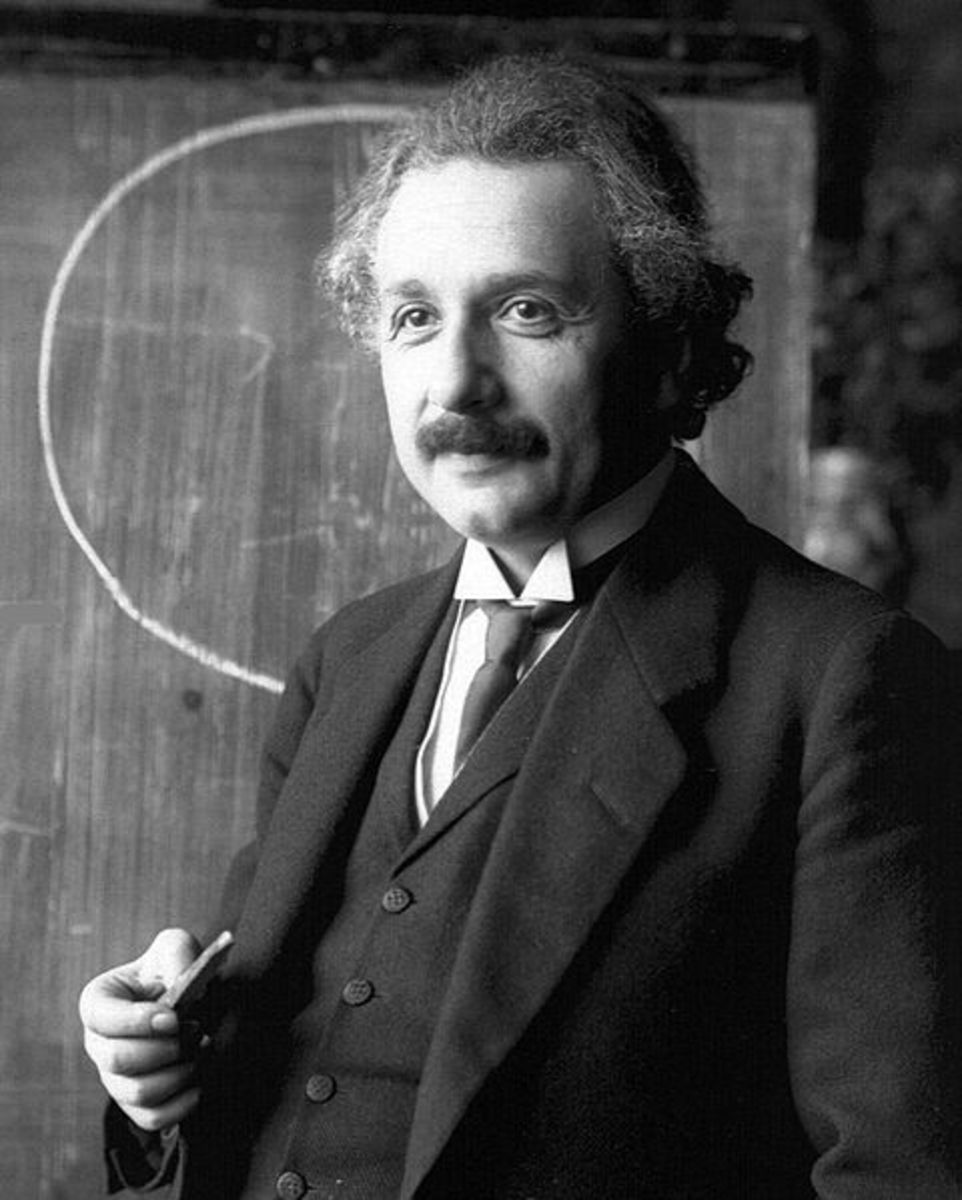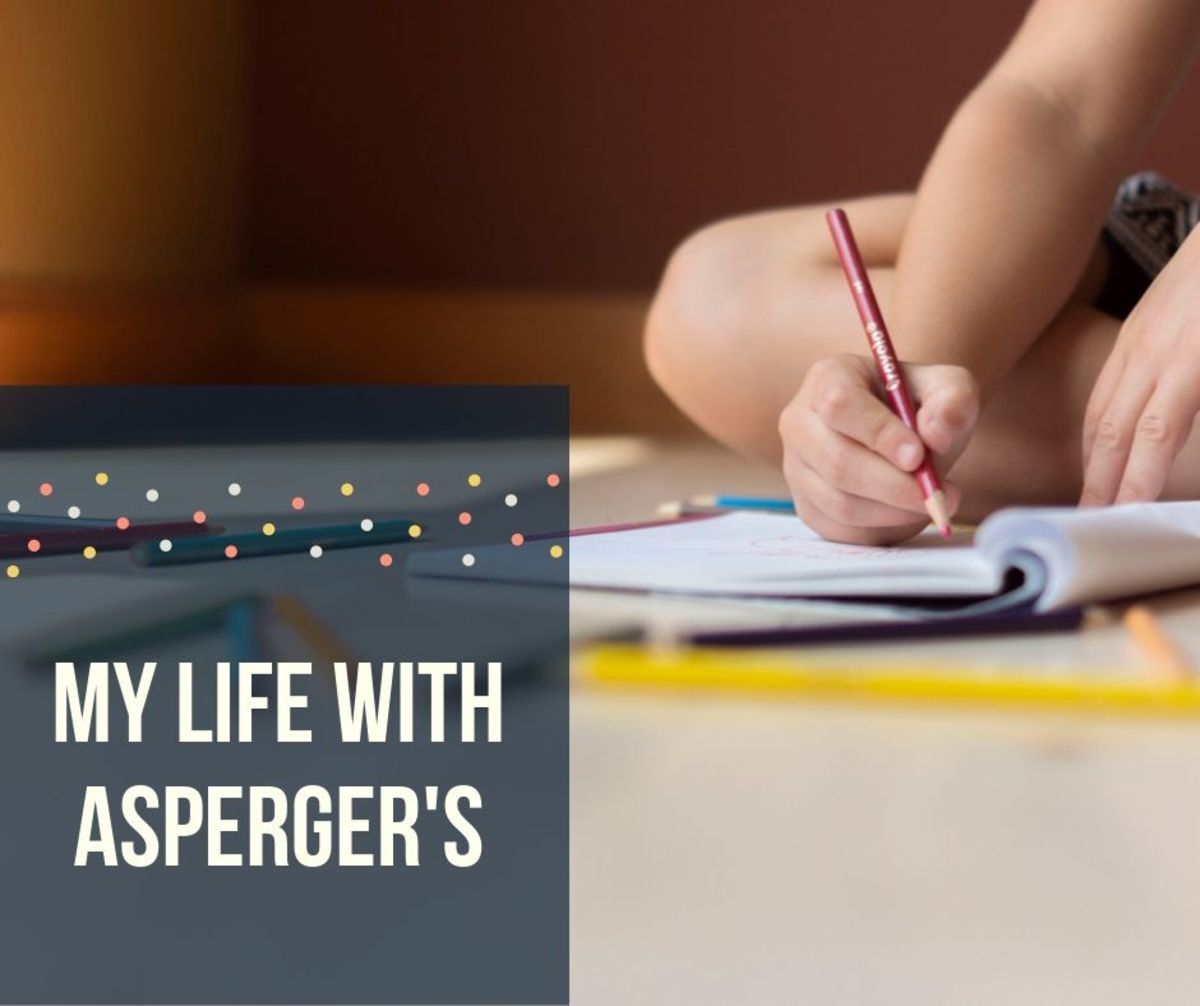Encouraging Communication in Children with Asperger Syndrome
Asperger's Syndrome is a neurological condition and is a higher functioning form of autism. Those with Asperger's Syndrome are generally of average intelligence, and often of particularly high intelligence but they are defined by a triad of impairments which are:
difficulty in communication
difficulty in social interaction, and
rigidity of thought
Asperger's Syndrome is on the higher end of the autistic spectrum, and because it is a spectrum there is a range of severity of the condition. Many older people these days may have the condition but never realised, they just knew that they had difficulty communicating and were a little eccentric. However, there are others who have the condition more severely and are unable to lead a normal life, to live along, to hold down a job etc. Younger people have often been diagnosed and often are given the necessary help and understanding of the condition to make things easier for them.
People with Asperger's Syndrome like everything to be in order and have routines. They can find it hard, sometimes impossible, to read the expression on other people's faces or to understand what people mean if they do not say exactly what is meant. Some cannot speak at all, even though they understand what is being said to them. Others can seem to speak completely normally, but will have difficulty understanding certain things said to them and then appear to be misbehaving. For instance, if you say ‘Just wait a minute' to someone with Asperger's Syndrome, they may wait for exactly 60 seconds and then ask why you are not ready. They are not being annoying on purpose, they are just taking you literally.
The cause of Asperger's Syndrome is unclear, it seems that there are many potential causes and possibly quite a strong family element. There is not much that the medical profession can provide to help except in extreme cases, but there are a range of interventions that have been used with varying degreees of success. Some of these interventions are behavioural in that they try to encourage the individual to behave in appropriate ways, other interventions are more of a treatment, for instance using nutritional methods which can ease the symptoms of the condition. In this essay I will discuss these interventions and indicate where they would be useful, giving examples where appropriate.
Asperger's Syndrome was originally identified by Hans Asperger in 1944, but it is only recently that it has gained attention. There are three recognised sets of criteria for diagnosing Asperger's Syndrome, all of which vary slightly. One of the more recognised methods is the DSM-IV(APA) which says the following: [Autism, medical and educational aspects]
A. Qualitative impairment in social interaction, as manifested by at least two of the following:
1.
Marked impairment in the use of multiple nonverbal behaviours such as
eye-to-eye gaze, facial expression, body postures and gestures to
regulate social interaction.
2. Failure to develop peer relationships appropriate to developmental level.
3. A lack of spontaneous seeking to share enjoyment, interests or achievements with other people.
4. Lack of social or emotional reciprocity.
A. Restricted repetitive and stereotyped patterns of behaviour, interests and activities, as manifested by at least one of the following:
1.
Encompassing preoccupation with one or more stereotyped and restricted
patterns of interest that is abnormal either in intensity or focus.
2. Apparently inflexible adherence to specific, non-functional routines or rituals.
3. Stereotyped and repetitive motor mannerisms.
4. Persistent preoccupation with parts of objects.
C. The disturbance causes clinically significant impairment in social, occupational or other important areas of functioning.
D. There is no clinically significant impairment in social, occupational or other important areas of functioning.
E. There is no clinically significant delay in cognitive development or in the development of age-appropriate self-help skills, adaptive behaviour and curiosity about the environment in childhood.
F. Criteria are not met for another specific pervasive developmental disorder ort schizophrenia.
Use of Picture Symbols
The use of picture symbols can be very useful when encouraging those with Asperger's Syndrome to communicate. The most recognised method of this is called PECS which is short for Picture Exchange Communication System. It involves using a behaviourally based system to encourage the child to exchange a picture card for something that he wants. This method is particularly good for non-verbal children, or those who find speech hard. However, care must be taken to ensure that the child does not use the card to avoid having to use speech, and hence regress to non-verbal. However, this method can encourage non-verbal children to speak, initially by just saying the words on the cards, but then expanding to encompass a wider vocabulary. It can also reduce tantrums, because it encourages the child to express themselves in an acceptable way.
David, aged 7, had slowly been taught to go to the local After School Club. He enjoyed this and generally it was considered to be a success. He did not speak to anyone there but he communicated fairly well non-verbally and there were no problems except for the fact that he would/could not ask to go to the toilet. This resulted in him wetting himself.
David was rather embarrassed about this and the helpers at the Club felt that they should have noticed before he wanted to go and taken him. Whilst his mother understood completely what had happened she was unsure what she could do to change the circumstances and didn't want David's confidence that had been gained by attending to suffer.
Since it was important to encourage David's independence it was felt that whilst asking if he wanted to go to the toilet at regular intervals might solve the problem, it would not encourage him to take the initiative himself, which could be quite important in less understanding circumstances. There had also be one or two younger children who had had similar problems.
The solution was to hang up a little container on the wall holding some paper pictures of toilets. When a child wished to go to the toilet, he would pick up one of these and take it to one of the workers. They would then deal with the situation as appropriate.
Sign Language
Signing has been used with children on the autistic spectrum since the early 1970s. Creedon worked with 30 autistic children in America and this showed that it was a valid way of communication for these children. Various research has also taken place later. Sign language is used for two reasons, as an alternative to speech and as an extra system to encourage the development of speech. Often the use of sign language will make it easier for children to learn speech, also, it is simple and more clear cut than spoken language, and easier to show to the children, since all that is necessary to move their hands into specific positions. There are indications that there are differential disturbances of left brain functions in autistic children and that signing may be processed in the right hemisphere. Obviously, in those children who are unable to speak, even basic communication by sign language is better than no communication at all, however, some parents feel that they may be adding yet another strange behaviour to their child.
There are various different methods of sign language. Makaton is probably the most popular for those within the autistic spectrum and is based on BSL (British Sign Language), the Paget-Gorman Sign System is also used sometimes, this is an artificial language based on English.
Many practitioners use a ‘total communication' method which involves using sign language and speech together. Shaeffer's research has indicated that children with autism are sometimes unable to pick up language in the normal way, but this method can help.
Option Approach
This is also known as the Son-Rise Program. It works on the principle that the child is doing the best that he can and the instructor tries to go into the child's world and draw him out into the everyday world in a loving and non-judgmental manner. There is a specification for a therapy room which minimises the external distractions for the children. This process is intensive and can be disruptive on family life, but is also effective.
Daily Life Therapy (Higashi Approach)
Daily Life Therapy was started by Dr Kiyo Kitahara in Tokyo nearly 40 years ago and was then introduced into America in 1987. It involves a combination of physical education, art, music, academic study and communication and living skills. This system is used for all autistic type condition and normally for children and young people between the ages of 3 and 22. The aim is to help children to develop to as near normal as possible, physically, emotionally and mentally and to be able to achieve independence and a good quality of life. Towards the end of their schooling, the children are placed in paid employment.
The main aim is to attain stable emotions and self esteem and from her to learn the other necessary skills. There is much physical exercise involved in Daily Life Therapy since vigorous physical exercise leads to the release of endorphins which inhibit anxiety. Research indicates that this exercise will reduce aggression, self-stimulatory behaviour and hyperactivity. Also children are encourage to gain control of their bodies by riding unicycles, roller skating and using a balance disk. The exercise are based on the principles of sensory integration and vestibular stimulation.
They are educated in language, maths and social sciences with encouragement given to the child's specific interests. Art and music are taught to help the children to express themselves. Behaviour management is performed without the use of aversive measures, punishment, medication or time out and independence is reached by concentrating on the child's strengths rather than his weaknesses. The children are given strict rules for correct posture and eye contact, social interaction is very much encouraged. The children are given some responsibilities from very early on to encourage their self confidence.
TEACCH (Treatment and education of autistic and related communication-handicapped children)
TEACCH is a programme that tries to respond to the needs of autistic people using the best available approaches and methods. It has been in existence for 30 years and the main goal is to help autistic children grow up to achieve maximum independence by adulthood. It encourages education and communication. There is an assessment called a PEP (Psycho Educational Profile) which tries to identify areas where the person ‘passes' areas where the skill isn't there yet and areas where the skill is emerging. These results are then put into an individual programme for the child. TEACCH does not employ behaviour modification, except when necessary, but tries to work on the underlying conditions, mainly encouraging the child to understand his environment better and by encouraging communication.
Lovaas
This is also known as ABA (Applied Behavioural Analysis) and is based on over 30 years research by, American, Ivar Lovaas. It works best with young children, preferably starting before the age of 3 ½ and teaches basic social, educational and life skills and is based on the use of constructive feedback. It involves intensive therapy for 40 hours a week. Lovaas believes that about half of children following this therapy will achieve normal educational and intellectual functioning by the age of 7. This method is for those with autism and Asperger's Syndrome and since Asperger's can be harder to recognise than autism, it may well not be noticed until the child is over 3 ½ meaning that the therapy will not be able to start at the optimum time. Because it is so intensive it can have enormous impact on family life and can be expensive as well, although some local authorities will pay for the treatment and it may be possible to get funding from elsewhere. However, it is very effective.
John's parents tried to use constructive feedback, although not the Lovaas approach as such, to encourage him to talk. John spoke well at home and OK in the classroom but could/would speak in other circumstances. There was one assistant at the school who was very good with him and was very keen to get him to speak to her.
John was obviously very nervous about talking in different circumstances but seemed to want to do it. His parents were concerned because he wouldn't talk in the various situations and were keen to use any appropriate method which would encourage this communication.
It was decided that they would give him £1.00 if he said something to this assistant and £5.00 if he had a proper conversation. A deadline was put on this and as much encouragement was given as possible.
Unfortunately John still did not speak to the school assistant. It was thought that since he was a very unmaterialistic child, and never really wanted anything, that no feedback of this sort would be effective.
Facilitated Communication
Facilitated communication is performed by supporting a person's hand and helping them to type on a keyboard or select letters on a letterboard. Even those with Asperger's Syndrome with severe communication problems can communicate at a reasonable level with this method. Some people have found that this is an amazing step for their child, but there is the issue of whether the facilitator is actually controlling what the child is doing.
SPELL (Structure, Positive, Empathetic, Low arousal, Links)
The SPELL framework is a methodology developed and supported by the National Autistic Society and followed in their schools. As is implied by the name it is based on having a structured environment, including routines, teaching methods and the layout of the school. It uses positive approaches to increase self confidence and self esteem and empathy to understand how the pupil thinks and communicates. The methods used are low arousal to encourage the children to be calm and links with relatives and other agencies are encouraged. This method provides a context in which other approaches may be applied.
Music Therapy
Music Therapy is the use of music to improve personal lives through creating positive improvements in behaviour. The training of a music therapist includes music, psychology, special education and anatomy. Because it is a non-threatening method it can be particularly helpful with those with autism. The therapist will use certain techniques for improving the deficits in a child's behaviour, for instance passing a ball back and forward to encourage communication. It also seems to be helpful in the development of speech. Autistic children are often very sensitive to music and may be exceptionally musical and so may be particularly responsive. Also, some children will sign even though they cannot talk.
Dietary Intervention
Some people with Asperger's Syndrome and autism improve considerably by the removal of gluten and casein from their diet, due to poor digestion of these substances. Gluten is found is wheat and other grains and casein is found in dairy products. Obviously this method can be hard to implement, especially as many children on the autistic spectrum, already have a very limited diet. However, in those children that do have these allergies, the improvement can be amazing and very quick. [The autism handbook]
Also, some research has been done which proves that supplementing the diet with magnesium and B6 can lead to considerably improvements those with autism and Asperger's Syndrome. [The autism handbook]
Some chemicals have been linked to worsening of Asperger's Syndrome, especially monosodium glutamate (E621) and aspartame.
Sound Therapy
Sound Therapy involves listening to specially treated music to help stimulate auditory processing. Some people, even when their ears are working correctly, have trouble processing the information received. This means that although they can hear what you are saying they may not understand it or it may come over as distorted, perhaps too loud or painful to listen to properly.
The implications of this can be widespread and it can affect attention, reading, writing, spelling, comprehension, behaviour and coordination. It is well known that children with autism tend to be much more visually oriented but have more difficulty understanding things that are said to them. There are also links with dyslexia, dyspraxia and a range of other conditions.
Indications of this sort of problem can be putting hands over ears, problems with speech, difficulties with spellings, confusion with understanding the spoken word, particularly if there is a lot of background noise and poor auditory memory.
The various different methods of sound therapy vary somewhat and have different names, but basically you listen to specially treated music for 15-30 minutes a day for a period of time. This then helps to stimulate various parts of the auditory processing system and this will increase the comprehension of aural input. Two of the more common methods are Berard Auditory Integration Therapy and The Tomatis Method.
Jenny is an adult with Asperger's Syndrome. Whilst she was fairly successful in her life she found communication difficult and felt very awkward about it. She felt that this was holding her back in her life quite considerably. Over the years she had read a great deal and tried very hard to improve, but she felt although there had been some improvement, there was a long way to go.
Somebody felt that she might benefit from sound therapy. She tried this over a period of a few months and noticed that she was looking at people in the eye much more frequently, even people she considered in authority, such as her boss and her doctor. She was quite surprised at this since it involved no conscious effort on her part but obviously was very pleased. She felt that other methods of communication had also improved for her.
Doman/ Delacato Method
Carl Delacato's therapy was developed in the 1960s and is based on the theory that autistic children are brain injured and this injury causes dysfunction in one or more of the channels of communication, ie sight, sound, taste, touch and/or smell. This dysfunction can lead to hypersensitivity (too much stimulation entering the nervous system), hyposensitivity (too little stimulation entering the nervous system) or white noise (internal static that disrupts input from external stimuli). The therapy aims to correct the faulty neurological progression that is evident in these children. He believes that the children lack the lateral development in the cerebral cortex and that these sensory approaches help to rebuild the physiological connections necessary to improve perceptions in these children.
The Delacato Method involves brain stimulation activities for brain injured children developed by Glenn Doman and Carl Delacato. It involves cross patterning, patterning and sensory exercises developed to enhance memory and processing.
The Delacato team evaluate a child and tailor a program to suit his/her needs. Programs are working on senses in order to normalise them and are devised for parents to carry out at home. They include massage for tactility, auditory and visual work, and tasks for smell and taste, mobility and development. All tasks are fitted into 2 to 5 minute slots so that the child does not become bored, and are repeated as necessary.
Summary
This essay has only listed some of the methods that are used for helping with Asperger's Syndrome. Obviously different methods are more effective for different people and not everything works for everybody, but there are certainly plenty of methods that can be successful.














